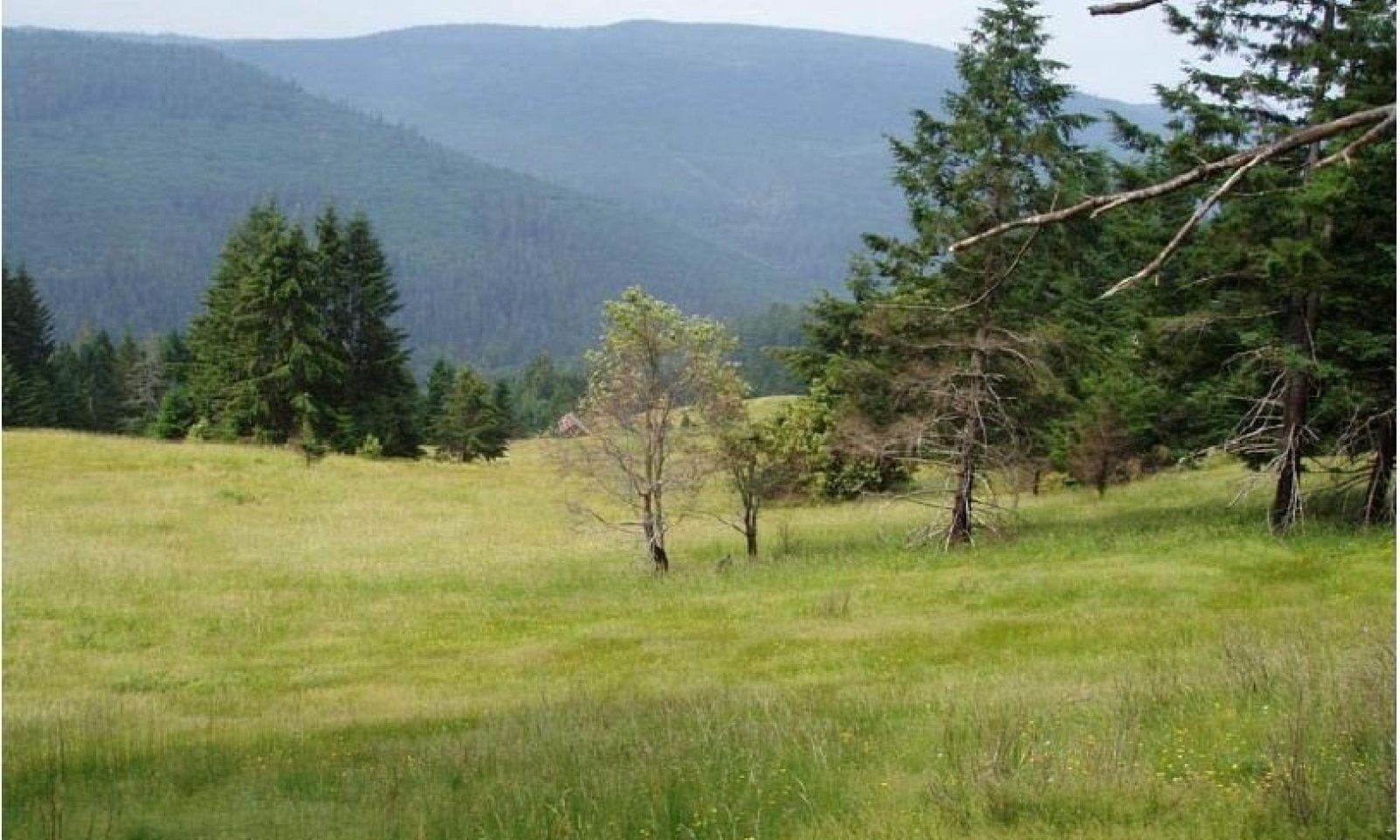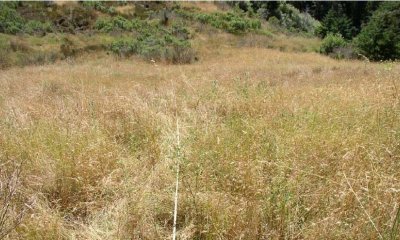
Loamy-skeletal Uplands
Scenario model
Current ecosystem state
Select a state
Management practices/drivers
Select a transition or restoration pathway
- Transition T1 More details
- Transition T2 More details
- Transition T3 More details
- Restoration pathway R1 More details
- Transition T4 More details
- Transition T5 More details
- Restoration pathway R2 More details
-
No transition or restoration pathway between the selected states has been described
Target ecosystem state
Select a state
Description
The dynamics described below are general to the level that the site concept has been developed for provisional ecological site concept identification and further investigation purposes only. It is meant to give a general overview of the ecological dynamics of the system and should not be viewed as a model for a specific ecological site level management. It is supported by the current available literature that was reviewed for a general understanding of the system and basic understanding of the abiotic and biotic drivers. Further investigations and soil-site data collection and analysis should be conducted before specific land management can be applied at the ecological site-specific scale. This STM only explains the general ecology and dynamics.
Composition and dynamics specific to this ecological site concept are not well documented and will require more data collection and soil investigation to properly define and describe them for land management decisions on an ecological site basis. It is possible that this site concept, along with R004BI201CA and R004BI202CA are all the same site or may need to be split differently, but for now they are recognized based on things we know about soil texture and plant response relationships—this may very well prove to be the wrong way to split out these rangeland concepts and need much more work before they are of value for land management on these sites.
It is thought that native perennial grasses and forbs once dominated many of the grasslands throughout this LRU. Native American burning often were primarily responsible for sustaining these plant communities over several thousand years. Without fires every few years, this community phase is actively encroached by shrubs and trees depending on where it is found within the LRU. Many of these rangelands are inland from the coast and more protected from the winds and daily harsh conditions of the coast, leaving them more susceptible to encroachment and infill of shrubs and trees.
Submodel
Description
With European settlement in the mid-1800s, the use of fire largely ceased. Seeding of introduced perennials was practiced in many areas suitable for grazing and other types pasture practices. Uncontrolled grazing of domestic livestock may have also contributed to an increase in annual grasses and forbs. Introduced perennials and annuals have out-competed native grasses and dominated the plant community in some areas. Fire may stimulate growth of native perennials by reducing competition but may also increase the amount of introduced perennials and forbs. When fire is re-introduced to the system, varying effects on vegetation may result.
Climatic factors influence the effect of fire on vegetation as well as the use of livestock grazing. Burning may cause an increase in native and exotic forbs such as western brackenfern and in introduced perennials such as tall oatgrass. Timing of burning appears to be an important factor affecting the presence of the native perennial California oatgrass; cover and frequency may decline with early summer burns versus late summer burning. Spring burning may be more successful in reducing tall oatgrass than fall burning; other studies indicate that spring burning may be detrimental to established native populations such as California oatgrass. Studies indicate that the effects of fire on native grasses are variable and further study is needed.
Submodel
Description
This state represents the point when fire has been suppressed for too long and the site has crossed a threshold and become a forest site, dominated by Douglas-fir and/or redwood and resembles many of the other surrounding associated forest sites. This state is not fleshed out beyond recognizing that the prairie may cross a threshold and begin to resemble the surrounding forest sites, depending on where in the LRU that prairie resides.
Submodel
Description
This state represents the intensive land uses that have significantly altered this ecological site due to urban developments, recreational activities, and agriculture. More information about this state is needed to flesh out the various impacts these types of land uses/alterations have had on the ecological site in order to better understand how to better manage of these areas or potentially attempt restoration of these areas where possible.
Submodel
Mechanism
This transition is caused by the introduction of non-native seed that allowed the conversion from a native perennial prairie to a non-native perennial and annual dominated prairie. Once these species become a part of the system, it is highly unlikely to go back without significant time and labor, and yearly maintenance.
Mechanism
This transition is caused by the long-term suppression of fire or fire emulating practices that allowed the Douglas-fir and/or redwoods to persist and shift the site characteristics and feedback mechanisms to those of a forested site, not a grassland. Time without fire is long enough that even if fire were used there is no longer a seed source or the soil properties necessary to allow grasslands to outcompete the trees and shrubs that now dominate the site. There is no restoration pathway for this site, as it is not known if this type of restoration is possible once it has crossed this threshold.
Mechanism
This transition is caused by significant human alterations that force this ecological site over a threshold and change the function and structure of this site in extensive ways.
Mechanism
This restoration pathway occurs only when significant time and money inputs that would require constant maintenance and weed management and should be focused on areas that have not been permanently altered by urban developments. This restoration pathway may be less likely than R2, since most of these very altered landscapes will be more hospitable to invasive species than to the native species that are more particular and require specific growing conditions that may not be replicable due to the alterations to the site that had occurred.
Mechanism
This transition is caused by the long-term suppression of fire or fire emulating practices that allowed the Douglas-fir and/or redwoods to persist and shift the site characteristics and feedback mechanisms to those of a forested site, not a grassland. Time without fire is long enough that even if fire were used there is no longer a seed source or the soil properties necessary to allow grasslands to outcompete the trees and shrubs that now dominate the site. There is no restoration pathway for this site, as it is not known if this type of restoration is possible once it has crossed this threshold.
Mechanism
This transition is caused by significant human alterations that force this ecological site over a threshold and change the function and structure of this site in extensive ways.
Mechanism
This restoration pathway occurs only when significant time and money inputs that would require constant maintenance and weed management and should be focused on areas that have not been permanently altered by urban developments. This restoration pathway may be more likely than R1, since most of these very altered landscapes will be more hospitable to invasive species than to the native species that are more particular and require specific growing conditions and simply don’t have the ability to compete with the non-native species in most cases.
Model keys
Briefcase
Add ecological site groups and Major Land Resource Areas to your briefcase by clicking on the briefcase (![]() ) icon wherever it occurs. Drag and drop items to reorder. Cookies are used to store briefcase items between browsing sessions. Because of this, the number of items that can be added to your briefcase is limited, and briefcase items added on one device and browser cannot be accessed from another device or browser. Users who do not wish to place cookies on their devices should not use the briefcase tool. Briefcase cookies serve no other purpose than described here and are deleted whenever browsing history is cleared.
) icon wherever it occurs. Drag and drop items to reorder. Cookies are used to store briefcase items between browsing sessions. Because of this, the number of items that can be added to your briefcase is limited, and briefcase items added on one device and browser cannot be accessed from another device or browser. Users who do not wish to place cookies on their devices should not use the briefcase tool. Briefcase cookies serve no other purpose than described here and are deleted whenever browsing history is cleared.
Ecological site groups
Major Land Resource Areas
The Ecosystem Dynamics Interpretive Tool is an information system framework developed by the USDA-ARS Jornada Experimental Range, USDA Natural Resources Conservation Service, and New Mexico State University.







